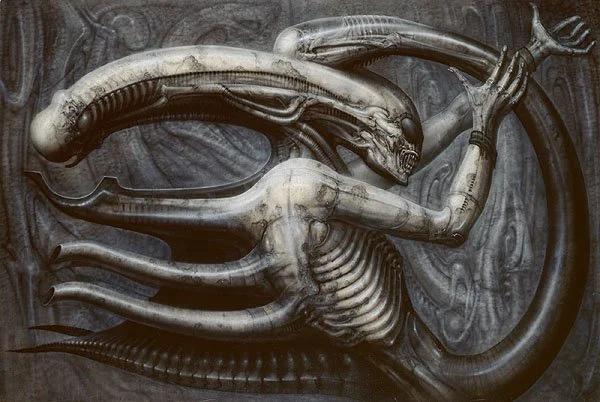The Provocative Art of Hans Giger: Exploring His Abstract and Surrealist Work
Hans Rudolf Giger, better known as H.R. Giger, was a Swiss artist whose unique and provocative vision challenged the conventions of art and society. His work was a blend of the organic and the mechanical, with a fascination for the erotic and the macabre. This article will explore Giger's life and work, his impact on modern culture, and his legacy as one of the most innovative and influential artists of the 20th century.
From the desk of Roy P. Awbery is a reader-supported publication. To receive new posts and support my work, consider becoming a free or paid subscriber.
Early Life and Artistic Beginnings
Hans Ruedi Giger was born on February 5, 1940, in Chur, Switzerland. His parents were devout Christians, and his father was a pharmacist. Giger's early years were spent in a strictly religious and conservative environment, which he rebelled against as he grew older. He was particularly drawn to the occult and the macabre, and his early artwork reflected these interests.
Giger studied architecture and industrial design at the School of Applied Arts in Zurich. He was particularly interested in the works of Salvador Dali and Ernst Fuchs, both of whom had a significant influence on his art. He also discovered the writings of Carl Jung, which had a profound impact on his understanding of the subconscious and the dark recesses of the human psyche.
Giger's early work was heavily influenced by the psychedelic movement of the 1960s. He created a series of drawings that explored the nature of consciousness and the hallucinatory experience. These works featured a range of grotesque, organic forms that were both beautiful and disturbing. One of his most well-known works from this period is "The Birth Machine," a series of images that depict a mechanized creature giving birth to a human-like being.
The Alien Franchise
Giger's most famous work is undoubtedly his contribution to the Alien film franchise. In 1977, Ridley Scott commissioned Giger to design the creature for his upcoming sci-fi movie. Giger's original concept was a far cry from the traditional Hollywood monster; it was a biomechanical horror that was both beautiful and terrifying.
The Alien, as Giger designed it, was an amalgamation of human, animal, and machine parts. Its elongated head and skeletal frame were inspired by the works of Francis Bacon, while its insectoid features drew from Giger's fascination with arthropods. The creature's inner jaws, which emerge from its mouth to attack its prey, were inspired by the pharyngeal jaws of moray eels.
Giger's design for the Alien was so successful that it became an icon of popular culture. The creature has since appeared in numerous sequels, prequels, and spin-offs, as well as in video games, comic books, and merchandise. Giger's contributions to the Alien franchise won him an Academy Award for Best Visual Effects in 1980.
The Female Form and Penetration
Giger's fascination with the human body, and in particular the female form, is a recurring theme throughout his work. His depictions of women are often highly sexualized, and his artwork frequently features images of penetration and insemination. This preoccupation with sexuality and the reproductive process is a reflection of Giger's interest in the occult and the biological.
One of Giger's most famous works is the painting "Necronom IV," which features a biomechanical being with a woman's body. The creature is shown in a position of submission, with its arms and legs spread wide. The work is a powerful commentary on the relationship between humans and technology, and the dominance of the masculine over the feminine.
(c) Hans Giger
Controversy and Legacy
Giger's artwork was frequently controversial and disturbing, with many of his works featuring violent and sexually explicit themes. His depictions of alien and robotic beings, often fused with human or animal forms, challenged conventional ideas of beauty and the human form.
Despite the controversy, Giger's influence on popular culture has been profound. His designs for the Alien franchise inspired a generation of artists and filmmakers, and his unique aesthetic has been referenced in countless films, TV shows, and music videos. Giger's artwork has been exhibited in museums and galleries around the world, and his legacy as one of the most innovative and influential artists of the 20th century is secure.
In 2014, Giger passed away at the age of 74. His death was mourned by fans and fellow artists alike, and tributes poured in from around the world. His legacy as a master of the macabre lives on, and his influence on modern art and popular culture is undeniable.
Conclusion
H.R. Giger was an artist whose unique and provocative vision challenged the conventions of art and society. His blend of the organic and the mechanical, with a fascination for the erotic and the macabre, set him apart from his peers and made him one of the most innovative and influential artists of the 20th century. Giger's impact on popular culture is immeasurable, and his influence can be seen in the works of countless artists and filmmakers. Despite his controversial subject matter, Giger's legacy as a master of the macabre lives on, and his unique aesthetic continues to captivate and inspire audiences around the world.



